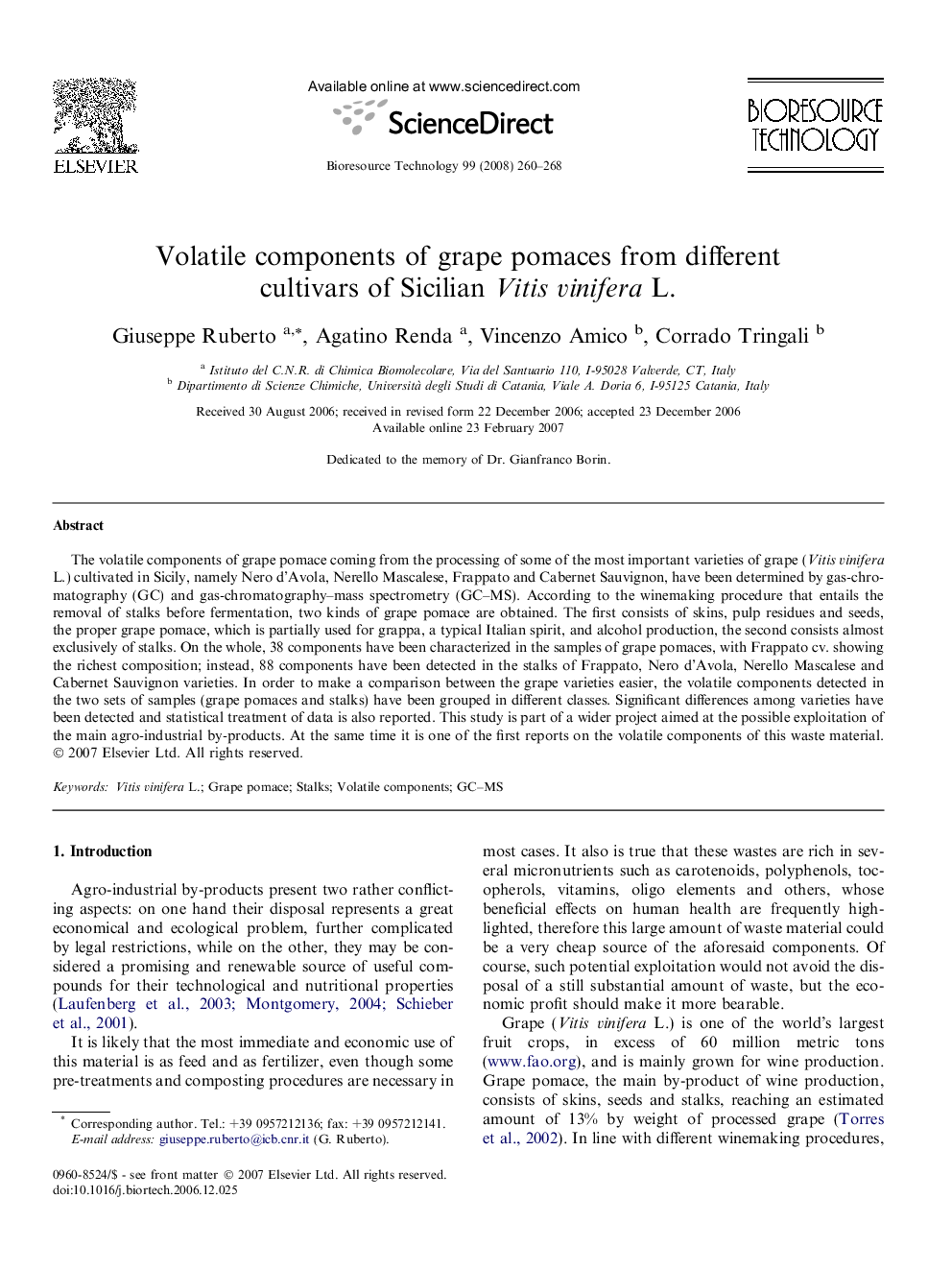| Article ID | Journal | Published Year | Pages | File Type |
|---|---|---|---|---|
| 684414 | Bioresource Technology | 2008 | 9 Pages |
The volatile components of grape pomace coming from the processing of some of the most important varieties of grape (Vitis vinifera L.) cultivated in Sicily, namely Nero d’Avola, Nerello Mascalese, Frappato and Cabernet Sauvignon, have been determined by gas-chromatography (GC) and gas-chromatography–mass spectrometry (GC–MS). According to the winemaking procedure that entails the removal of stalks before fermentation, two kinds of grape pomace are obtained. The first consists of skins, pulp residues and seeds, the proper grape pomace, which is partially used for grappa, a typical Italian spirit, and alcohol production, the second consists almost exclusively of stalks. On the whole, 38 components have been characterized in the samples of grape pomaces, with Frappato cv. showing the richest composition; instead, 88 components have been detected in the stalks of Frappato, Nero d’Avola, Nerello Mascalese and Cabernet Sauvignon varieties. In order to make a comparison between the grape varieties easier, the volatile components detected in the two sets of samples (grape pomaces and stalks) have been grouped in different classes. Significant differences among varieties have been detected and statistical treatment of data is also reported. This study is part of a wider project aimed at the possible exploitation of the main agro-industrial by-products. At the same time it is one of the first reports on the volatile components of this waste material.
